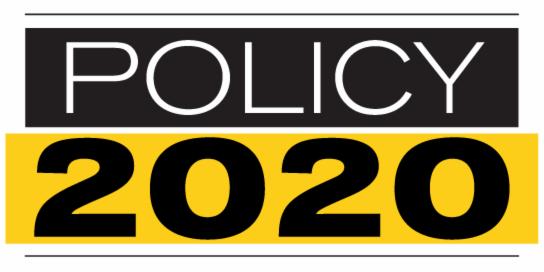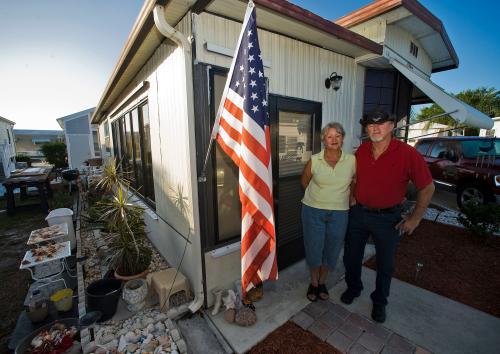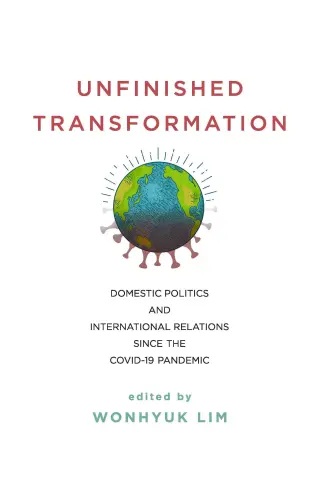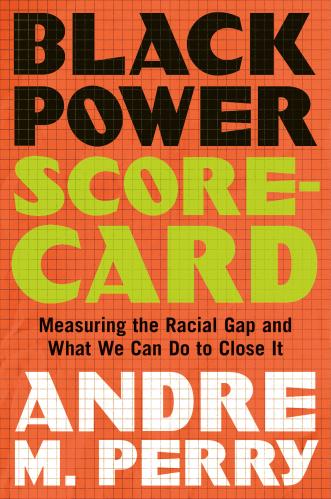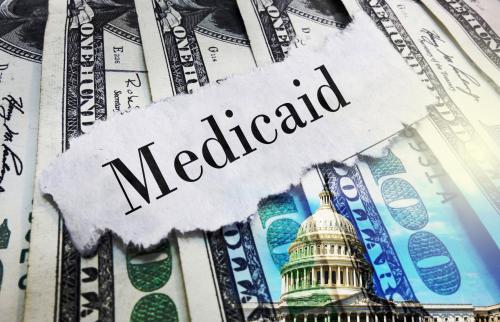A new paradigm is needed for retirement security in America. The old paradigm, or rather the old aspiration, was that workers stayed with one employer for many years and retired at age 65 with a lifetime pension. The federal government provided a Social Security benefit check to supplement the pension, along with Medicare health insurance. The old paradigm was partly illusory in that company pensions were never available to all workers. Still, it shaped the perception of a normal retirement model.
Today, the old paradigm has disappeared for private sector workers and even for public employees, traditional pensions have been scaled back. Employers are abandoning the old retirement model because it became too expensive with regulatory changes and increased life expectancy. At the same time, the growth of 401(k) plans gave employers an alternative approach to funding their employees’ retirement.
The government’s contribution to the old retirement paradigm is still alive and important, but it is under stress. The Social Security trust fund is expected to be exhausted in 2035 and the Medicare trust fund in 2026. Transfers from the U.S. Treasury can keep benefits flowing, of course, but the pressure is on to restrain the growth of “entitlement” programs, such as Medicare, Medicaid, and Social Security. There also has been a major demographic shift with the decline in the birth rate and changes in labor force participation. In earlier periods the labor force grew at over 2% a year but going forward growth will be only a half a percent a year.1 As a result, there are many fewer workers available to support retirees. Moreover, a series of large tax cuts has left the Treasury ill-prepared to tackle the fiscal ramifications of these demographic shifts.
Like it or not, the old retirement paradigm is not coming back. From now on, the American middle class must take responsibility for funding its retirement and managing its assets to provide retirement security. The rich are doing fine, saving enough and relying on advisors to make sure they are protected. The working poor are probably not going to save very much, and they will rely on Social Security and Medicare (and Medicaid-funded elder-care). There are four keys to helping the middle class achieve a secure retirement. Policymakers should put Social Security and Medicare on a sound fiscal footing; ensuring everyone can pre-commit to a regular payroll savings plan, help through a tax or a cash incentive; allowing all workers to move to Medicare at age 65; and making deferred lifetime income policies available in 401(k)-type plans.
First key: Strengthen Social Security and Medicare
Social Security can be made fiscally sound with a combination of modest increases in payroll taxes plus an increase in the normal retirement age, with an adjustment of the minimum benefit level. Many workers start collecting benefits at age 62, when they are first eligible, and it is important they not live in poverty after a lifetime of work.2
Medicare is tougher. America pays much more for health care than other countries, largely because health care providers receive higher prices for their services.3 The Affordable Care Act made progress with cost controls and a joint report by scholars at Brookings and the American Enterprise Institute suggested additional improvements that could slow cost growth.4 Further Medicare reform efforts are desirable although politically difficult, but one change that should not happen is to force the elderly to pay substantially more out-of-pocket for care. This would derail efforts to create a secure retirement for Americans.
Second key: Saving enough
All workers should have access to a retirement saving plan based on automatic payroll deductions, and everyone should be enrolled unless they specifically opt out of the program. Evidence has shown that automatic enrollment increases participation and savings.5 Currently, many small employers do not have 401(k)-type plans because of the costs of administering a plan and high turnover among employees. Proposals in Congress (the SECURE Act and RESA) would help by allowing small businesses to join employer groups to have a plan administered by a provider. These changes are not enough, however, because not all employers will participate and there are many workers who are on contract or who are not full-time employees receiving retirement benefits.
Congress should authorize the Social Security Administration to offer anyone paying Social Security taxes a retirement savings plan with the contributions collected along with payroll taxes. The plan would be administered in the same way that the Thrift Savings Plan (TSP) is administered for federal employees so individuals can choose how they want their retirement funds invested and by whom. SSA would collect and pool the contributions and pass to authorized private sector fund managers. Provision should be made for employers to make additional matching contributions to supplement the amounts saved by their employees. This plan would not only ensure that all workers are covered by a retirement plan, it would also lower costs. TSP’s costs are only a few basis points of the amount collected and these administrative costs should be paid with tax revenue. To improve its political feasibility, the program should be optional with easy sign up. This would prevent pushback from people who do not trust government or those who already have a good retirement plan. Over time, it may prove possible to have automatic enrollment with an opt-out provision.
If Congress fails to act on such a proposal, individual states can adopt their own plans; in fact, that is already happening. The advantage of a federal plan is that it would be available to everyone and would eliminate complications when people move across state lines. Still, state programs are helpful.6
Currently there are tax incentives for retirement saving. Employees and the self-employed can contribute to 401(k)-type plans or IRAs out of before-tax income, provisions that cost the Treasury about $200 billion a year. This approach provides a substantial incentive to those with high incomes and high tax rates and very little incentive to those who face low federal and state income tax rates. Congress should amend tax law so that there is a smaller tax incentive provided to upper income households while low-income households get a cash incentive to boost the amount in their retirement savings accounts. 7
Third key: Working longer
People are already working longer. Men aged 55-64 have increased their labor force participation rate from 67% in 1996 to 70.2% in 2016. For those 65 and over, the participation rate has risen from 16.9% to 24.0% over the same period. The pattern for women is similar with participation falling for those in the 45-54 bracket and rising for older women. The strong economy since 2016 has encouraged people to seek jobs and pulled up participation and employment rates for most demographic groups. 8
Although we do not know for sure, it seems likely that a reason for rising participation among older workers is they are concerned about whether they have enough money to last them through their lifetimes. Working longer has three distinct benefits for older workers. One, it allows people to postpone the year when they start collecting Social Security benefits. Each year someone postpones retirement up to age 70 adds 7%-8% to their monthly check for the rest of their lives (postponing from 62 to 70 adds over 80% to the benefit). Two, it means the amount of retirement saving has fewer years to cover and retirement savings are not spread as thin. Three, someone who is working and saving has extra time to keep saving and earning returns, especially if their employer is contributing to the plan.9
Some people will not be able to work longer because of poor health, but given its advantages, policymakers should encourage people and employers to extend working lives if they can. Health insurance for most people is provided through employer plans and employers either self-insure or pay premiums that are tied closely to claim history. This adds to the cost of employing an older worker. Under current law, an employee who is over 65 will remain on the employer plan even though they are old enough to collect Medicare. Instead, workers who reach age 65 should be moved to Medicare automatically, a change that would lower the expected insurance premiums for the employer and lower the total employment cost for that person. Such a policy change would impose an additional budget cost on Medicare, but the net cost to the federal budget would not be very large and could even be positive. If people work longer and keep paying taxes longer, then federal receipts will be sustained. The health insurance cost of older workers is quite substantial on average,10 plus when a worker moves to Medicare, that takes away the possibility of a very large bill and small companies are particularly concerned about such large payouts.
Fourth key: Lifetime income
Retirees face significant longevity risk, the risk of running out of money before they die. To economists, the obvious solution is to purchase annuities. People loved traditional pensions, but no one wants to buy their own pension in the form of a lifetime guaranty of monthly income. One reason for this is that annuities are rarely offered in 401(k) plans and fees are high for those who enter the market for annuities as individuals. Most of the so-called annuities sold in the market are not really annuities at all but are ways for high-income people to defer taxes. In addition, people are reluctant to give up control of their retirement funds. They may believe they can earn a higher return in the equity market than the low interest embodied in products on the market. They may choose to self-insure against the need for elder care or nursing home care as they get older by conserving their retirement funds.
An answer to this problem lies in a relatively new product called a deferred income annuity. A worker would designate that perhaps 10 percent of their contribution (employer and employee) would go to purchase a deferred annuity, an insurance policy that would only start to pay out when the policy holder reached age 80 or 85. Because that age is far into the future and because a fraction of people will die before reaching that age, it is possible to purchase a low cost policy that pays out a good stream of income from age 85 until death. This product is best thought of as insurance against outliving one’s money, not as a form of investment. Most of a retiree’s savings are still available to invest as they wish and to cover contingencies like the need for a nursing home.
This policy proposal is to encourage employers to offer deferred annuities as part of their 401(k) plans and to counsel employees as to the value of these products. To do this, employers must be given safe-harbor provisions to ensure they are not subject to legal recourse in the event of the failure of an insurance provider as long as they follow reasonable procedures in selecting the products on offer.
-
Footnotes
- Baily is working with Benjamin H. Harris on a retirement policy project joint with the Kellogg School. This project has been generously supported by the Sloan Foundation and the Laura and John Arnold Foundation. The ideas presented here are the author’s alone. However, he owes a debt to Harris and those who have written papers for this project.
- Congressional Budget Office, Potential Labor Force Growth, figure 2-1 page33, An Update to the Budget and Economic Outlook, 2019 to 2029, August 2019.
- For Social Security solvency proposals that preserve benefits for low-income workers see Peter A. Diamond and Peter R. Orszag, “Saving Social Security,” Journal of Economic Perspectives, Spring 2005. Or Marc Goldwein, Maya MacGuineas and Chris Towner, Promoting Economic Growth through Social Security Reform, Committee for a Responsible Federal Budget, September 2019.
- See Accounting for the Cost of the US Health Care: A new look at why Americans spend more, which provided a detailed breakdown of relative costs in the US and other advanced economies; McKinsey Global Institute, 2008. The US also pays more for administrative costs and on marketing. I was an advisor to this study.
- https://www.brookings.edu/opinions/joint-recommendations-of-brookings-and-aei-scholars-to-reduce-health-care-costs/
- Brigitte C. Madrian and Dennis F. Shea, “The Power of Suggestion: inertia in 401(k) participation and savings behavior,” Quarterly Journal of Economics,116, pp. 1149-87 and John Beshears, James J. Choi, David Laibson and Brigitte Madrian, “The Importance of default options for retirement saving outcomes: Evidence from the United States,” in Stephen J. Kay and Tapen Sinha, eds Lessons from Pension Reform in the Americas, Oxford: Oxford University Press, pp. 59-87.
- https://www.wsj.com/articles/the-case-for-revamping-401-k-s-1537754400
- https://www.bls.gov/emp/tables/civilian-labor-force-participation-rate.htm
- The case for working longer is made in https://www.nber.org/papers/w24226
- Gary Burtless and Eric Koepke, “Age Related Health Costs and Job Prospects of Older Workers,” paper presented at The Brookings Institution conference on Reducing Employer Bias Against Older Workers, November 2, 2018.
The Brookings Institution is committed to quality, independence, and impact.
We are supported by a diverse array of funders. In line with our values and policies, each Brookings publication represents the sole views of its author(s).


